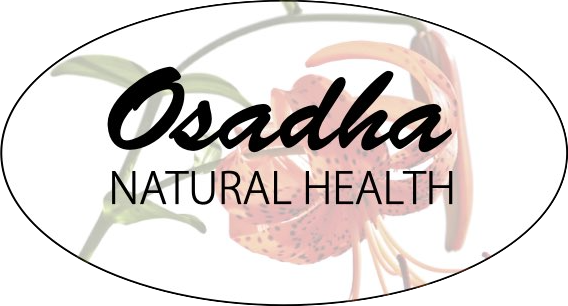Open up and say aaaahhhhh! What your tongue’s color tells you
What does your tongue have to say about your health? Part 1 – What your tongue’s color tells you
The tongue is handy for a lot of things: Tasting, speaking, sticking out at someone. It’s also a window into how the body, mind and emotions are doing and has been used as a diagnostic tool for millennia. This is the first in a series providing some basic tips for analyzing your tongue and and some simple dietary steps to take for support around what you learn.
To kick the whole thing off…
When someone checks your tongue, this is some of what they’re checking:
•Tongue shape
•Tongue color
•Whether there’s a coat, it’s color and where it is
•Other markings – cracks, spots, toothmarks and their location
•How the underside of the tongue appears
Make it a habit to check your tongue when you get out of bed in the morning, before any coffee, tea or breakfast. Natural light is ideal for checking your tongue. If standing on your porch sticking out your tongue isn’t going to happen, halogen lighting is the next best thing. Open wide and stick your tongue out fully. Don’t strain to stick it out, which will change tongue shape. Take your time to look, but don’t keep your tongue extended for more than 10-15 seconds or the color and wetness will change. Rest then stick it out again.
Have fun with this! Check your tongue before and after eating. If you’re female, look at your tongue at different points in your menstrual cycle. Feeling sick? Get a look at your tongue! You get the idea…
Tongue body color
Tongue body color is its most important diagnostic feature. It doesn’t change rapidly, so it’s a good indicator of your overall constitution and any chronic issues.
Normal tongue color should be a healthy dark pinkish-to-light red. Not too pale and not too red. Kind of subjective, yes? Pale to me means that the tongue is lighter in color than a “standard issue” piggy bank. Or the color of raw chicken breast (that would be really pale!). For too red, think firetruck, or maybe red roses that are starting to dry. If these visualizations aren’t helping, then go here.
Pale tongue
A pale tongue either indicates coldness in the body (“Yang Deficiency” in Chinese medicine) or a lack of Blood (1). (Blood from a Chinese standpoint is spelled with a capital “B” to distinguish it from the Western idea of blood; they overlap in function but aren’t identical.)
Yang deficiency
Yang is a heating, energizing force in the body. With yang deficiency, the tongue is pale, swollen and wet. There is coldness in the body and possible problems with reproductive function, fluid retention, excess urination, loose stools and a sense of weariness. It depends on the body system(s) being affected. Too many cold or raw foods are some of the contributing factors in yang deficiency (2). They essentially start putting out the body’s fire.
To tonify the yang, eat from the following list of foods (2):
•Legumes – black beans, aduki beans, lentils
•Spices – ginger, cardamom, cinnamon, cloves, rosemary, etc.
•Produce – squash, mustard greens, garlic and other alliums, parsnips, sweet potatoes, dates
•Whole grains – oats, quinoa, spelt
•Seeds – sesame, sunflower and pinenuts
•Grass fed beef, chicken, lamb, anchovies, mussels, trout, shrimp, butter
Blood deficiency
Blood deficiency is more common in women, given that we bleed regularly. The tongue will be pale and dry. Symptoms associated with Blood deficiency may include dry hair and nails, light menses, irregular heart beat, fatigue, dizziness, anxiety, depression, insomnia and tiredness depending on the part of the body most affected (3).
Blood deficiency may come from heavy bleeding, too many cold or raw foods, an overly restrictive diets, irregular eating habits, too much alcohol, overwork, or chronic worry.
For nutritional support, eat regular meals, eat a variety of whole foods, don’t gorge, cut down on cold or raw foods, and increase warming foods. Some good foods to include to support the Blood include (2):
•Whole grains – oats, brown rice, quinoa
•Legumes – beans, lentils
•”Super greens” – spirulina, chlorella, seaweed
•Produce – dark leafy greens, pumpkin, beets, dried apricots, vitamin C-rich veggies & fruits
•Animal products – eggs, liver, grass fed beef, chicken, mussels, oysters
Bright- or dark red tongue
Red indicates heat. Heat may be either from too much yang (yang excess) or from not enough fluids (yin deficiency)(1).
Yang excess
Yang excess results in a red tongue with a yellow coat (1). In earlier stages the tongue may be wet, but will eventually dry out if the imbalance isn’t corrected. (We’ll get into tongue coats next time!). Yang excess may cause feelings of heat, high blood pressure, constipation, dark colored urine, insomnia, anger, irritability, nightmares and other issues.
Yang excess can come from excess ingestion oily foods, fried foods, spicy foods, excess red meat, alcohol, or coffee. Not enough cooling foods, certain pathogens, or chronic anger or irritability could also be responsible.
For yang excess eat the following foods (2):
•Raw or lightly cooked foods
•Produce – bitter greens, radishes, carrots, mushrooms, apples, tomatoes, citrus, cantaloupe, cucumbers, celery, eggplant, broccoli, cauliflower
•Legumes – soy sprouts, tempeh, mung beans
•Whole grains – millet, whole wheat, barley, amaranth
•Animal products – yogurt, crab, clam
•”Super greens” – spirulina, seaweed
Yin deficiency
Think of yin deficiency like a car engine that’s low in oil or radiator fluid…eventually it gets hot! Yin deficiency shows up as a dry, red tongue lacking a coat (1) and may cause issues like anxiety, night sweats, hot flashes, facial flushing, insomnia, irritability, worry, or overthinking (2).
Yin deficiency can come from chronic stress, overwork, too much sex, irregular eating habits, diuretics, refined foods, too many spicy foods, synthetic drugs, mineral deficiencies, omega 3 deficiency, and other causes (4).
Reduce spicy foods, alcohol and coffee and add the following supportive foods (2):
•Produce – beets, cucumbers, grapes, raspberries, blackberries, watermelon
•Legumes – string beans, black beans, mung beans, tofu
•Whole grains – millet, barley, whole wheat, rice, teff, amaranth, quinoa
•Animal products – eggs, oysters, clams, sardines, duck, grass fed beef, pork, dairy (except butter)
•”Super greens” – spirulina, chlorella, seaweed
•Soups, stews
Other tongue body colors
The tongue may also have bluish or purplish coloration, indicating a lack of Blood movement somewhere in the body (1). This can be due to either heat or cold and is more complicated than the basics that I want to cover. If you want to geek out further on this, jump into the resources listed at the end.
One last note before signing off, spicy foods temporarily redden the tongue, and artificial colors may turn it all sorts of whacky hues. Until next time, get looking at your tongue!
Resources
1.https://theory.yinyanghouse.com/theory/chinese/tongue_diagnosis
2. Pitchford, P (2002) Healing with whole foods. Asian traditions and modern nutrition. 3rd edition. North Atlantic Books, Berkeley, CA.
3. http://www.giovanni-maciocia.com/downloads/EJOM_Blood_Deficiency.pdf
4. Maciocia, G (1995) Tongue diagnosis in Chinese medicine. Revised Edition. Eastland Press, Seattle, WA
~~~
Content © Dr. Anna Marija Helt, Osadha Natural Health, LLC. Permission to republish any of the articles or videos in full or in part online or in print must be granted by the author in writing.
The articles and videos on this website for educational purposes only & have not been evaluated by the Food and Drug Administration. This information is not intended to diagnose, treat, cure, or prevent any disease or to substitute for advice from a licensed healthcare provider.

